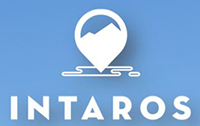This document describes the final implementation of new observing systems developed within the INTAROS project in the Fram Strait and Kongsfjorden area. It reports on initial results from the observing systems and describes ways for the delivery of data retrieved by these systems.
AWI developed and tested the experimental system “arcFOCE” (arctic Free Ocean Carbon Enrichment) that enables scientists to study impacts of ocean acidification on small, sediment-inhabiting deep-sea organisms. The first long-term experiment of the system was conducted from October 2018 till September 2019 at the LTER observatory HAUSGARTEN in the eastern Fram Strait. Sediment samples were taken to study anticipated changes in bacterial and meiofaunal numbers, biomasses and community composition due to artificially reduced pH values in bottom waters. All data from the initial arcFOCE experiment will finally be stored in the PANGAEA data repository. The lack of ship time in 2020 allowed to reconfigure and optimize the experimental setup. Short-term in-situ tests of the improved system will be carried out during the RV Polarstern expedition PS126 in June 2021; the next long-term deployment (one year) of the arcFOCE system is planned for 2022.
CRNS-UIEM installed a passive acoustics system at Kongsfjorden, Svalbard, which is identical to another system already deployed and running in Greenland, to allow direct comparison of results from these monitoring systems in western and eastern part of the Fram Strait. Acoustic data from the two systems are available via SEANOE (https://www.seanoe.org) or SEXTANT (https://sextant.ifremer.fr/). Results from the acoustics system at Kongsfjorden showed that AIS (Automatic Identification System) data of vessels operating in the area and their acoustic propagations need to be combined with passive acoustic measurements to assess the effect of vessel noise on the acoustic soundscape.
CNRS-LOV continued and improved their measurements at the AWIPEV CO2 time-series monitoring site in Kongsfjorden, Svalbard. Time-series data generated by in-situ sensors in the fjord and in a Ferrybox flow-through system at AWIPEV is, to our knowledge, the first one at such high frequency. Raw data from the deployed sensors are available in near real-time: https://awipev-co2.obs-vlfr.fr. Quality-controlled data will be uploaded to the World Data Center Pangaea as soon as the final samples will be received and analysed, sometime in 2021. Among the key results is the fact that the fjord is a net sink for CO2 throughout the year.
Type of deliverable
Demonstrator
Number
D3.12
Lead beneficiary
AWI
Dissemination level
Public
Due (in months)
54
Deliverable file
Document
Open deliverable
YES
